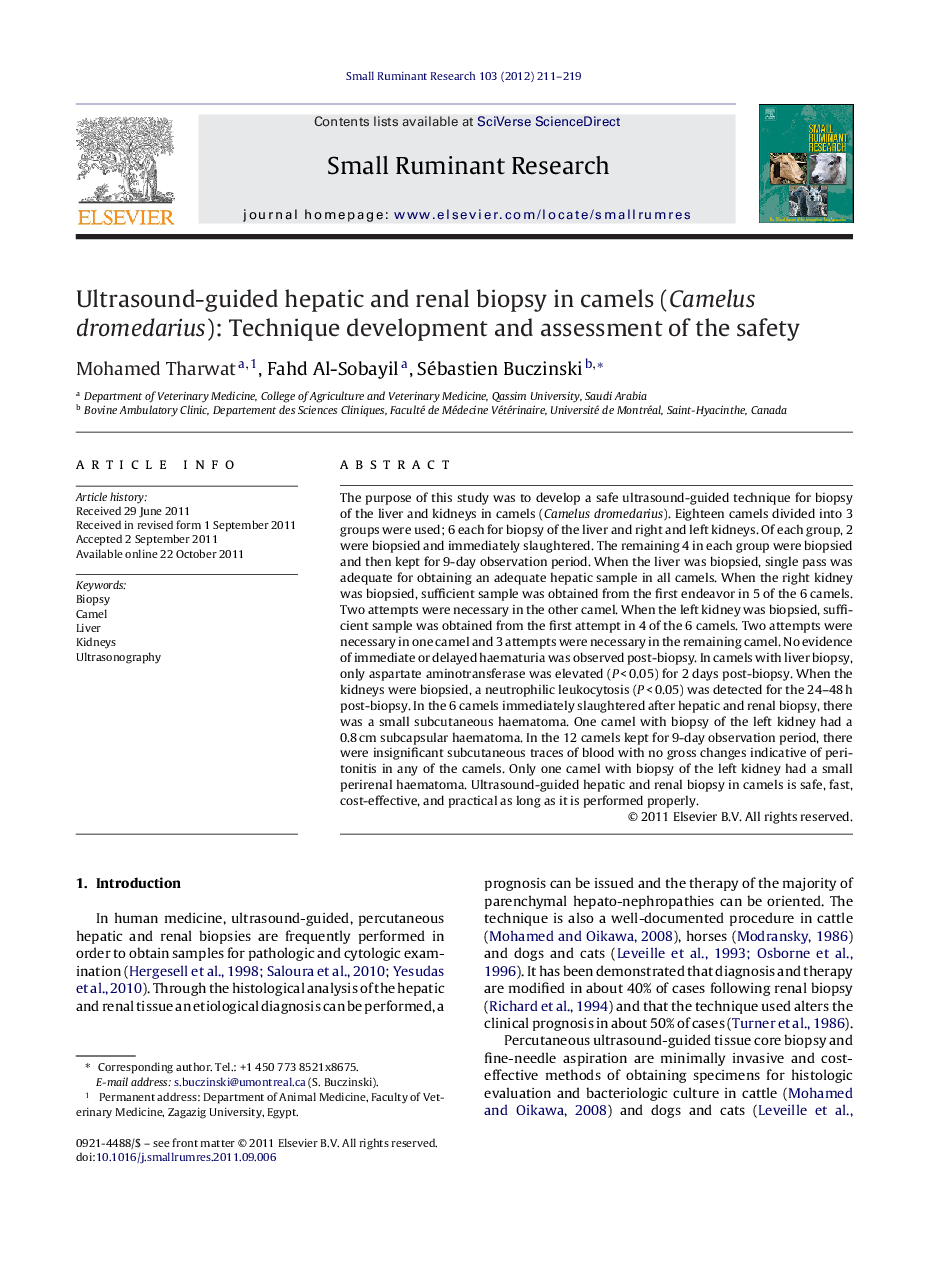| Article ID | Journal | Published Year | Pages | File Type |
|---|---|---|---|---|
| 2457278 | Small Ruminant Research | 2012 | 9 Pages |
The purpose of this study was to develop a safe ultrasound-guided technique for biopsy of the liver and kidneys in camels (Camelus dromedarius). Eighteen camels divided into 3 groups were used; 6 each for biopsy of the liver and right and left kidneys. Of each group, 2 were biopsied and immediately slaughtered. The remaining 4 in each group were biopsied and then kept for 9-day observation period. When the liver was biopsied, single pass was adequate for obtaining an adequate hepatic sample in all camels. When the right kidney was biopsied, sufficient sample was obtained from the first endeavor in 5 of the 6 camels. Two attempts were necessary in the other camel. When the left kidney was biopsied, sufficient sample was obtained from the first attempt in 4 of the 6 camels. Two attempts were necessary in one camel and 3 attempts were necessary in the remaining camel. No evidence of immediate or delayed haematuria was observed post-biopsy. In camels with liver biopsy, only aspartate aminotransferase was elevated (P < 0.05) for 2 days post-biopsy. When the kidneys were biopsied, a neutrophilic leukocytosis (P < 0.05) was detected for the 24–48 h post-biopsy. In the 6 camels immediately slaughtered after hepatic and renal biopsy, there was a small subcutaneous haematoma. One camel with biopsy of the left kidney had a 0.8 cm subcapsular haematoma. In the 12 camels kept for 9-day observation period, there were insignificant subcutaneous traces of blood with no gross changes indicative of peritonitis in any of the camels. Only one camel with biopsy of the left kidney had a small perirenal haematoma. Ultrasound-guided hepatic and renal biopsy in camels is safe, fast, cost-effective, and practical as long as it is performed properly.
